When the temperature was 10 MeV
t ~ 10-2 s
- There are lots of photons compared to the number of protons and neutrons.
- At such a high temperature, blackbody radiation has lots of photons.
- We knew before that we needed a large number (109) of photons per proton.
- The density of protons and neutrons at this time was not enormous, roughly comparable to the density of water.
- There are lots of electrons and antielectrons.
- The number of electrons and antielectrons should be about the same
as the number of photons.
- There is a reaction to keep them in equilibrium.
- If there are not enough electrons and antielectrons, then some more
are made by
- photon + photon --> electron + antielectron
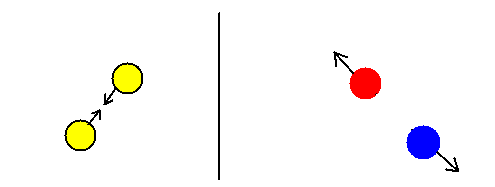
- If there are too many electrons and antielectrons, then they turn into
photons
- electron + antielectron --> photon + photon
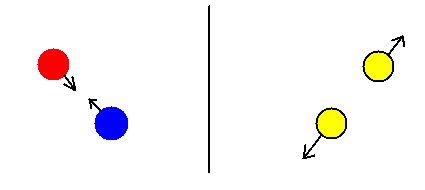
- There are lots of neutrinos and antineutrinos.
- The number of neutrinos and antineutrinos should be about the same
as the number of photons.
- There is a reaction to keep them in equilibrium.
- If there are not enough neutrinos and antineutrinos, then some more
are made by
- electron + antielectron --> neutrino + antineutrino
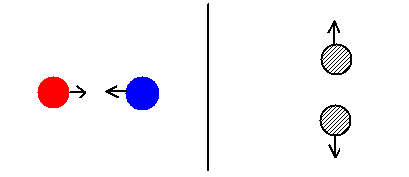
- If there are too many neutrinos and antineutrinos, then get wiped
out by
- neutrino + antineutrino --> electron + antielectron
- Actually, there are a three kinds of neutrinos, and there should have
been lots of all three kinds.
- These neutrinos should still be around.
- But so far we can't detect them.
- Maybe one kind has enough mass to provide the dark matter.
- Quarks are bound into protons and neutrons.
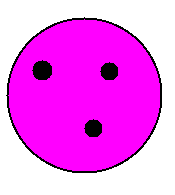
- At a temperature bigger than about 1000 MeV, protons and neutrons would have been dissociated into quarks.
- That is because with more than 1000 MeV of energy, you can rip protons and neutrons apart.
- That happened at an earlier time.
- Now it is too cold for free quarks.
- There are no nuclei (He, Li, Be, ...)

- At a temperature bigger than a few MeV, nuclei get ripped apart.
- Now still too hot for nuclei.
- The number of protons is about the same as the number of neutrons.
- There is a reaction to keep them in equilibrium.
- If there are too many protons, then they turn into neutrons
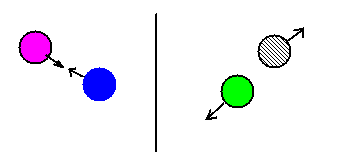
- p + antineutrino --> n + antielectron
- p + electron --> n + neutrino
- If there are too many neutrons, then they turn into protons
- n + neutrino --> p + electron
- n + antielectron --> p + antineutrino
Davison E. Soper, Institute of Theoretical Science,
University of Oregon, Eugene OR 97403 USA
soper@bovine.uoregon.edu





